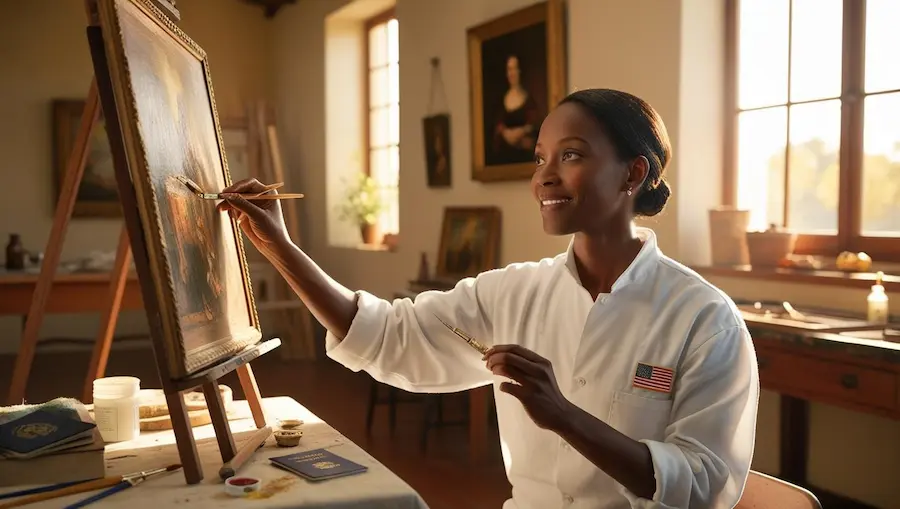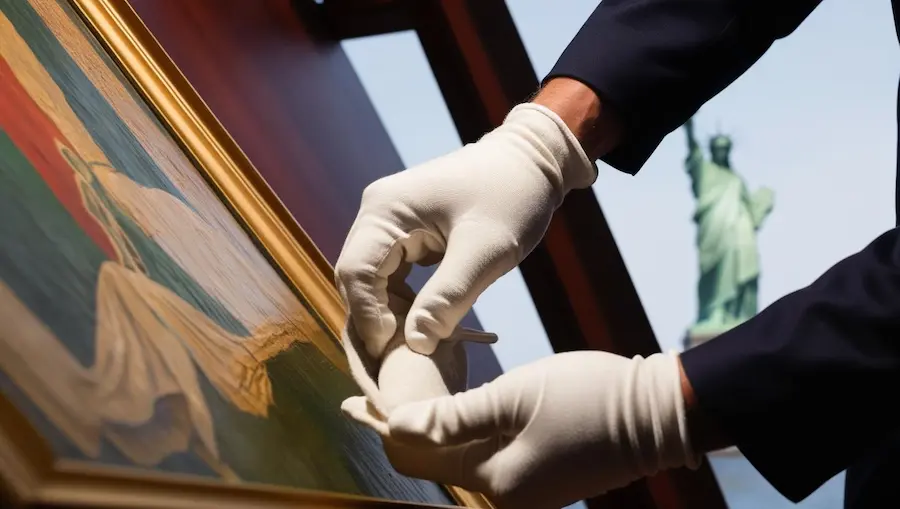Let’s talk about a story that’s as dramatic as a Renaissance painting—except this one’s set in the world of U.S. immigration. If you think the EB1A green card is only for Nobel Prize winners and Olympic athletes, think again. This is the real-life saga of an art restorer who went from rejection to redemption, and what you can learn if you’re chasing your own American dream.
The Setback: When “Extraordinary” Isn’t Enough (At First)
Picture this: You’ve spent decades restoring priceless works of art, leading museum departments, and publishing research that’s respected across continents. You finally make it to the U.S., ready to share your expertise, and…bam! The Texas Service Center says, “Sorry, not extraordinary enough.” That’s exactly what happened to our protagonist, a Russian art restorer with a resume that would make the Louvre jealous.
The denial? Brutal. The director claimed she didn’t meet enough of the EB1A criteria, questioned whether she’d keep working in her field, and doubted her impact on the U.S. art scene. Damn.
The Comeback: Evidence, Persistence, and a Second Look
Here’s where most people throw in the towel. But not this art restorer. She appealed, armed with a mountain of evidence and a story that deserved to be heard. She didn’t just claim to be extraordinary—she proved it, with:
- Documentation of judging art competitions and serving on expert councils
- Multiple scholarly articles published in respected journals and conferences
- Proof that her restoration work was featured in exhibitions dedicated to her craft
- Awards, leadership roles, and a clear plan to keep contributing in the U.S.
She even clarified that her evidence pre-dated her petition, countering the director’s nitpicks about timing.
The Twist: When the System Sees the Bigger Picture
On appeal, the Administrative Appeals Office (AAO) took a fresh look. They recognized that judging the work of others, publishing scholarly articles, and having restoration work displayed in exhibitions all count—big time. The AAO withdrew the denial and sent the case back for a new decision, making it clear: if you meet the criteria and can show sustained acclaim, you deserve a shot. Here is that verdict in PDF from USCIS.

The Takeaway: What Every Art Restorer (and Creative) Needs to Know About the EB1A
Here’s the real talk: The EB1A green card for art restorer applicants isn’t just about having a fancy title or a few awards. It’s about telling your story with evidence—showing how your work has shaped your field, been recognized by peers, and will benefit the U.S. If you’re an artist, scientist, or creative, don’t let a denial stop you. The process is tough, but persistence (and the right documentation) pays off.
What worked for this art restorer?
- She didn’t give up after the first denial.
- She got strategic about her evidence—quality, not just quantity.
- She made sure every piece of her story fit the legal criteria.
- She got help from people who know how to win these cases.
Ready to Restore Your Own American Dream?
If you’re an art restorer, scientist, or creative genius looking to self-petition for an EB1A green card for art restorer, don’t go it alone. At Green Card For Alien, we help extraordinary people like you build bulletproof petitions—reference letters, main petition, and all the details that make your story shine. We know what USCIS wants to see, and we know how to tell your story so it stands out.
Don’t let a denial define your journey. Get expert help with your EB1A green card petition and let’s turn your achievements into your American success story.
Your art deserves a global stage. Let’s make it happen—together.

